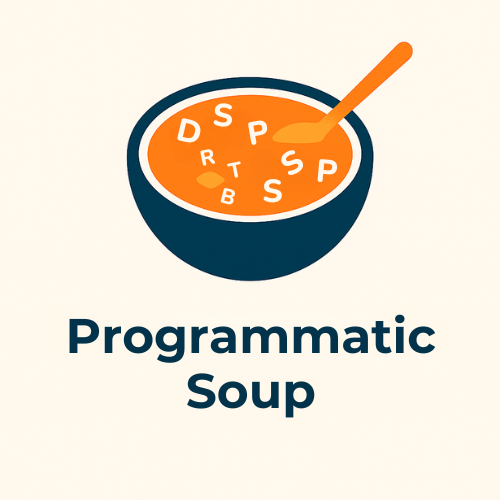Will brand suitability replace brand safety with the evolving media landscape?
A quick search on Google outlines the many impacts COVID has on our lifestyle, health and wellbeing. This social and economic disruption has also greatly affected most industries. Needless to say, it has also largely impacted the advertising industry. Amidst this chaos and disruption, brands have come to realise the need to understand how to run advertising campaigns that can protect their image in keeping with the existential climate.

We see that the pandemic has catalysed a shift from simply being Brand Safe – which used to refer to spam, malware and inappropriate content to adopting the concept of Brand Suitability – a solution that allows for customised targeting parameters.
Before we delve into the current industry issues, let’s first define what both Brand Safety and Brand Suitability is in our view.
What is Brand Safety?
Brand Safety is a solution that aims to help a brand avoid negative content that is generally considered to be inappropriate for advertising. This usually refers to the pre-set categories e.g. adult content, violence, hate speech, crime, terrorism & death. This often includes content that promotes or glamorizes the consumption of vices such as drugs.
You can find out more on IAB’s content taxonomy here.
What is Brand Suitability?
Brand Suitability is a solution that allows a brand to define specific targeting parameters. This solution can either help a brand avoid content that is specifically inappropriate against its own unique sensitivity and values. However, the same content could be appropriate for another brand.
Current Industry Issues
Media Investment
We typically see that advertisers/agencies tend to shift budgets away from environments that are not compatible with brand safety verification partners. This is most evident in in-app environments since they lack reporting and optimisation tools across the industry. They usually rely on manual optimisation methods such as inclusion/exclusion lists or even resorting to reviewing apps one by one.
Negative associations
Due to ads serving against contentious issues/negative content, we see that consumers tend to become hostile to these brands. This may result in reduced brand equity, negative publicity and even revenue loss.
Relevance
While consumers are open to ads, they are critical about what kind of ads should be shown to them. DoubleVerify has reported that 44% of US consumers would try a new brand after seeing a relevant ad.
Food for Thought: Is relevance really a key issue now given GDPR and Cookieless movement?
There are differences between being contextually relevant compared to personal relevance. The latter is based on a user’s behaviour. Specific to this case, relevance refers to contextual relevance – “is this ad delivering the right message at the right time?”
Ideally, we would like to see a luxury brand advertisement in a similar context (i.e. luxury lifestyle content). This is further coupled by the fact that there were discussions about rolling back GDPR in the UK, and Google delayed plans to deprecate 3rd party cookies. This has shown the unpreparedness of the industry, and that relevancy is still (ironically) relevant.
Fake News
In our current news climate, it is important that we navigate news cycles, as consumers are less likely to purchase from a brand that advertised alongside fake news. Based on the same DoubleVerify report, 67% of consumers are more likely to look at an ad if it appears on a trusted news site.
Homonyms
Blanket keyword blacklists are still adopted by many advertisers and agencies to protect their brands from being associated with questionable content by proximity. Keyword blacklists fail to look at the context of the article, as keyword lists can flag neutral or even positive articles based on the keyword presence.
Consider the word ‘shoot’: some brands would avoid it by default. However, it could also refer to photoshoot, or other variations of the word e.g. shot – COVID vaccine shot etc.
Shifting Contexts
This refers to blocking of specific categories/terms due to changing circumstances. For example, most brands did not want to appear alongside COVID-19 content. Thus, for most publishers that regularly covered the pandemic news, their inventory were often blacklisted due to COVID reports. This resulted in publishers’ ad revenues to decline by 19-25% as advertisers were pulling media spends.
Point of View
As mentioned, Brand Safety and Brand Suitability have real-life business consequences. Consumers tend to associate brands with the content they appear on as an implied endorsement of the content message. Associations with negative content have a long-standing impact on brand equity. Hence, what I would suggest is for brands to adopt a brand suitable framework, instead of relying on blanket brand safety standards.
How do we build a brand suitable framework?
A brand suitable framework includes:
- Using standard brand safety settings as a baseline. For example:
- inclusion/exclusion lists at domain, full URL and app-id level
- sensitive categories
- third-party brand safety and verification
- Echoing IAB’s two-prong approach – avoidance and allowance.
- Avoidance refers to where you do not want to appear
- Allowance refers to the exemption of certain content from their avoidance settings.
The table below delineates how different companies in different industries can adopt the brand suitability framework that is unique to them.
Brand suitability is not a static concept: emerging events or news cycles should continue to be assessed independently. A brand should have an iterative assessment cycle to identify what types of content are acceptable, and what need to be avoided. This should align with their media targeting strategy to ensure that ads only appear on sites/apps that were deemed suitable.
| Insurance Companies | Alcohol Companies | FMCG Companies |
| Recommended Brand Safety Settings: Avoidance: Implementation of Standard Brand Safety Categories Allowance: Advertise on contentious issues such as COVID-19 Content, Cancer, Health Risks etc. | Recommended Brand Safety Settings: Avoidance: Implementation of Standard Brand Safety Categories, exception of Alcohol category Allowance: Leverage on sentiment analysis to ensure they do not appear alongside negative news due to alcohol abuse | Recommended Brand Safety Settings: Avoidance: Implementation of Standard Brand Safety Categories Allowance: Leverage on sentiment analysis to ensure they do not appear alongside negative news due to health risk |
Conclusion
Brand Suitability is most likely to replace Brand Safety eventually. As digital advertising affords customisation and personalisation, we should look at brand safety the same way.

